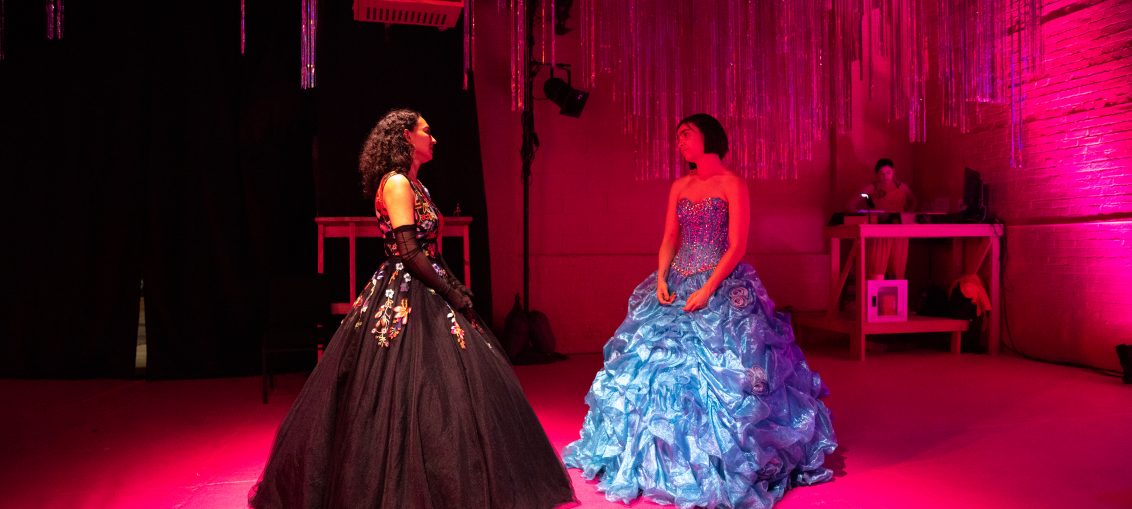
Anyone who has tended a garden (even on a rooftop or fire escape) or owned a houseplant knows that a living thing needs proper care, time, nourishment, and nurturing to grow, flourish and reach its potential. The same is true of a new work of theatre. It does not sprout from the playwright’s head or the director’s vision fully actualized but requires an investment to cultivate the seed and make it bloom.
I have seen no finer example of this in the past two years than the journey of the interactive play celebrating modern Mexican American culture playing (on extension) at The Bushwick Starr’s new home through June 26th. QUINCE is a coming-of-age tale about a 15-year-old Mexican-American girl confronting her queer identity, dealing with complex family relationships, and questioning her faith on the eve of her Quinceañera. It’s a modern-day Cindy-rella story with animal spirits as guiding forces, a friendly priest as a fairy godmother, a strict mother who experiences her own transformation, and ball gowns galore, all sealed with true love’s kiss.
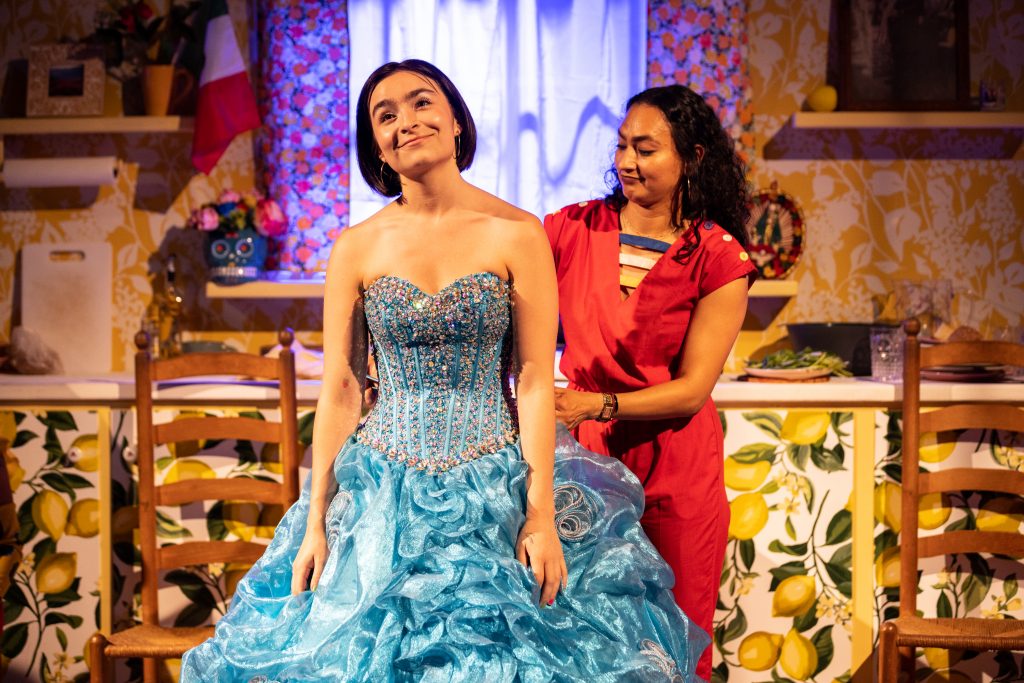
The journey of QUINCE, written and co-created by Camillo Quiroz-Vasquez, directed and co-created by Ellpetha Tsivicos, and produced by the creative duo’s company, One Whale’s Tale, began humbly and fittingly at The People’s Garden in Bushwick. It was August 2020, and QUINCE was one of the first live performances since the pandemic shuttered theaters in mid-March that year. I reviewed the production for Broadway World and was delighted to experience live theatre again.
The show was creative and fun, with immersive elements like a live band and colorful costumes that extended to the audience with handcrafted masks by the show’s costume designer, Scarlet Moreno. Some mishaps were hard to blame (the generator blowing and leaving the actors without amplification over the jarring sound of the above-ground subway passing every few minutes), but the play itself needed work. The characters weren’t fully developed, the acting style was a bit over the top, the chemistry between some performers wasn’t there yet, and the script needed polishing.
Knowing all that made watching the fully-actualized version of QUINCE at the Bushwick Starr all the more profound. During that two-year incubation period, the play’s creators produced other immersive experiences celebrating their multi-cultural (Mexican-American and Greek-Cypriot American) heritages, and QUINCE was further developed through a residency at The SHED. The weeds were pulled out, leaves pruned, and the bugs shooed away, allowing the piece to blossom to its full potential.
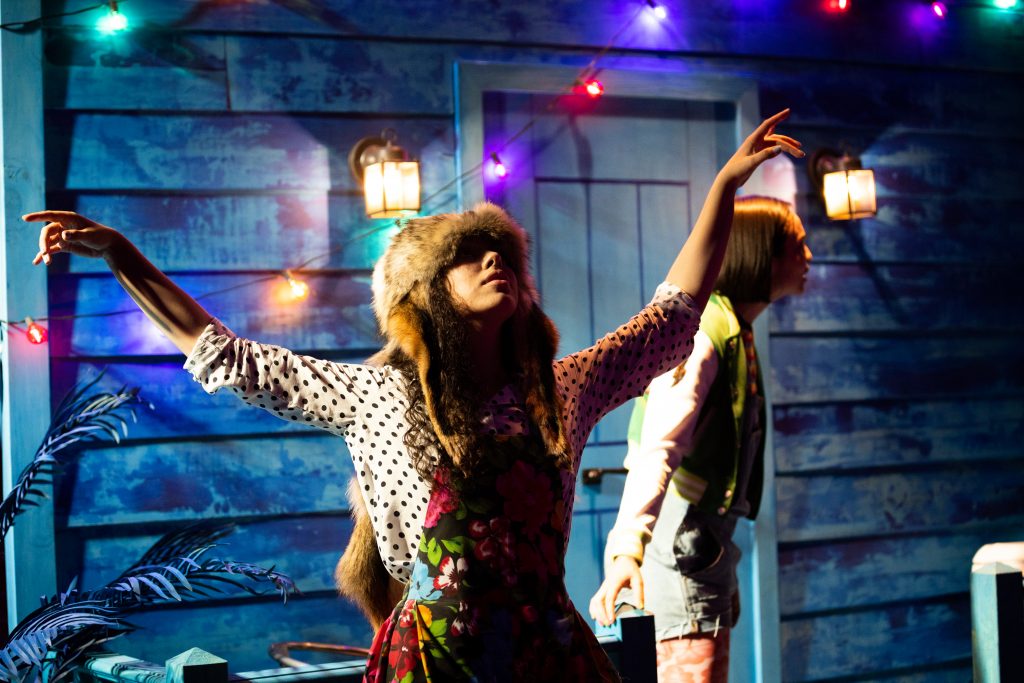
Let’s start with the setting. All of Quiroz-Vasquez and Tsivicos’ works I’ve witnessed have a penchant for offering an immersive experience as an integral part of the performance. But with so many moving parts, elements can often go awry (I know personally from producing immersive events). In QUINCE, the Bushwick Starr’s vast, open warehouse space is painted pink and decorated for a Quinceañera party. The audience is seated at tables festooned with party favors and Mexican snacks. The bar serves canned margaritas, Mexican beer, or water which you can enjoy during the show and get another round delivered to you during intermission. If you want the whole culinary experience, come a little early and indulge in offerings from the Taquito Feliz food truck parked outside the theater. You can bring your tacos to your table.
Tanya Orellana’s scenic design positions the scenes around the entire space. The band is in the back right corner decked out like a banquet hall, the church confessional and bus stop flank the entrance side, the family kitchen, where most of the dialogue takes place, is center-right, and across from that is solitary Uncle Solomon’s front porch. Mextly Couzin’s lighting design guides the action, and instead of getting the audience on their feet as in other immersive shows, all one has to do is pivot their head or chair slightly to observe the scene. This makes attendees feel intimately involved but requires no schlepping around (or herding cats) and ensures every seat is a good one. Bravo to the director and creative director, Tsivicos, and all the stage managers and coordinators for providing the party’s flow!
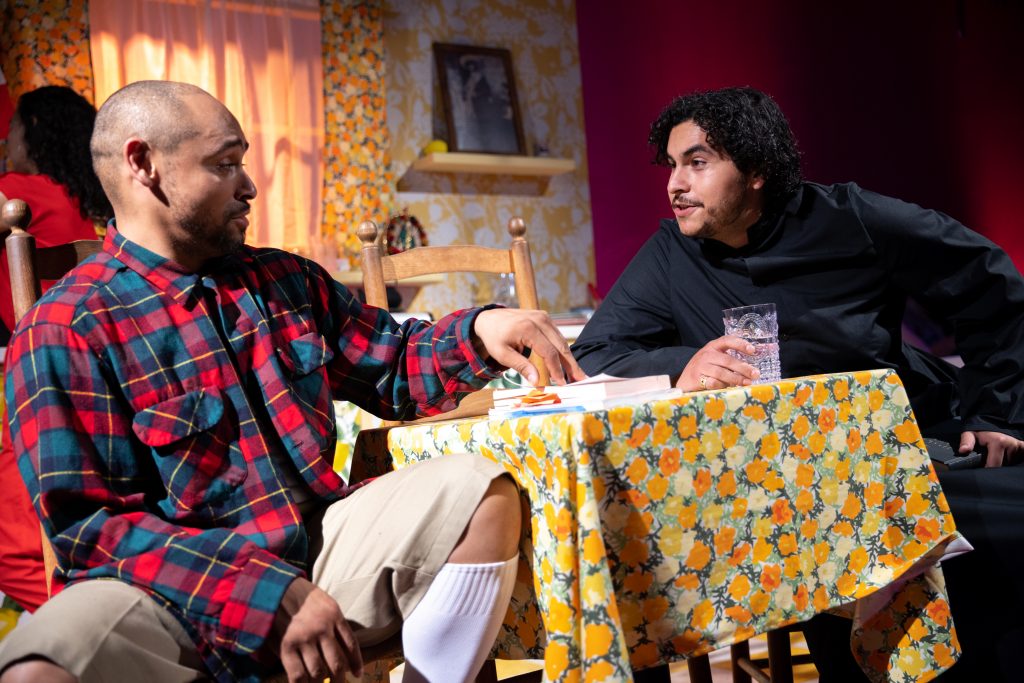
The story of QUINCE focuses on Cindy (Sara Gutierrez), a Chicana teenager confronting her queer identity, family and religion on the eve of her Quinceañera, a rite of passage ushering a girl’s transition into womanhood, emphasizing the importance of family and community. Gutierrez played Cindy in 2020, and it’s delightful to see her growth as an actress in the role. She embodies the quirks of a teenager but is more comfortable in her skin, even when dealing with uncomfortable issues. These include explaining her amorous relationship with Katie (the bubbly Livvie Goble and Saige Larmer at other performances) to her agoraphobic Uncle Solomon (played with tremendous heart by Jose Perez), and her uptight Catholic mother Maria (performed with depth and sincerity by Brenda Flores).
QUINCE covers hot topics and social concerns familiar to some Hispanic households; teenage pregnancy, single motherhood, tense family dynamics, the use of food stamps, and struggling with one’s queerness and sexuality, all set against the intensity of the Catholic church. But Quiroz-Vasquez’s writing never feels pandering. It’s very matter-of-fact, making the dialogues in QUINCE feel authentic like you’re peeking through the curtains of an honest, albeit dramatic, Mexican-American family.
Quiroz-Vasquez jumps in the role of Father Joaquin, the friendly neighborhood priest who makes regular house calls to Cindy and Maria’s kitchen for pastries, beer, and soul-searching chats. The actor and playwright said the character was inspired by growing up around real-life priests who’d make such visits. Today, when religion is often viewed as an oppressive force, it’s refreshing to see a character like Father Joaquin portrayed as a man of the cloth with an open mind who genuinely helps clear confusion and supports the characters in their struggles.
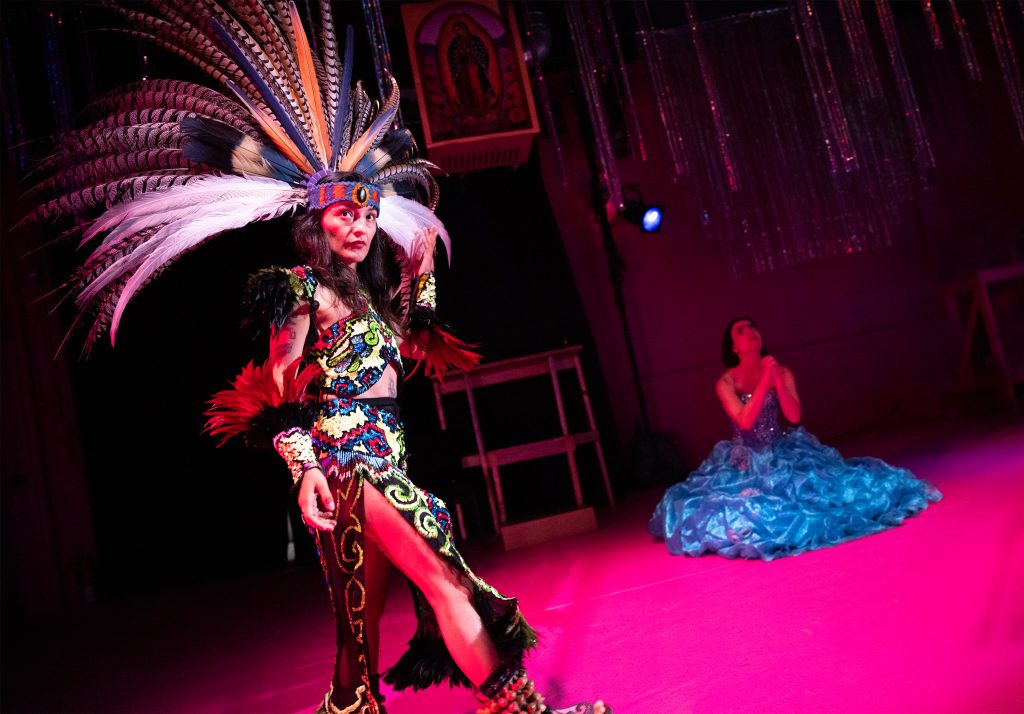
But Mexican culture goes back far before Catholicism arrived, and Latin American rituals, mythology and magic come into play through spirit animals who wander throughout the space and guide the main characters to their destinies. They are portrayed by Anabel Lugones De Leon (Tricky Coyote) and Talisa Velazquez (Jaguar) outfitted in brilliant colors and paper mache masks by Scarlet Moreno. In a particularly charming moment, Cindy meets a woman at a bus stop wearing a resplendent feathered headdress as tall as she is and other indigenous Mexican/Aztec garb. This is not one of the magical creatures, but a Quetzi, a performer off to dance at a pow wow, just like the actress Quetziquetl Angulo Aleman does. Cleverly linking the two worlds, Quetzi is a relative of Father Joaquin.
The band featuring Marilyn Castillo (vocals), Juan Ospina (bass), Andres Fonseca (percussion), and Sebastian Angel (guitar) carries the story through sound. The music is a vital, vibrant part of the play; it offers flow and pace to the scene transitions, becomes the tune playing on the radio or the band at the Quinceañera party, and makes the heart swell at particularly emotional moments. QUINCE has a cinematic or episodic television vibe, and the band’s music is much more than atmospheric; it becomes a score.
But even with all of these exciting elements, QUINCE would fall flat if it wasn’t for the chemistry and powerful performances of the central characters. Each of them struggles with shame and secrets. Cindy, with her queerness, Maria as a hardworking single mom holding the family together who fears her daughter will make the same mistakes she did, and Solomon, so afraid to leave his home or his sister’s that he’s cut himself off from the world. The interactions between the three are alternatively heartening and heartbreaking. I found myself reaching for the napkins graciously provided on several occasions because I was laughing so hard I was brought to tears or so emotionally stirred that I wept.
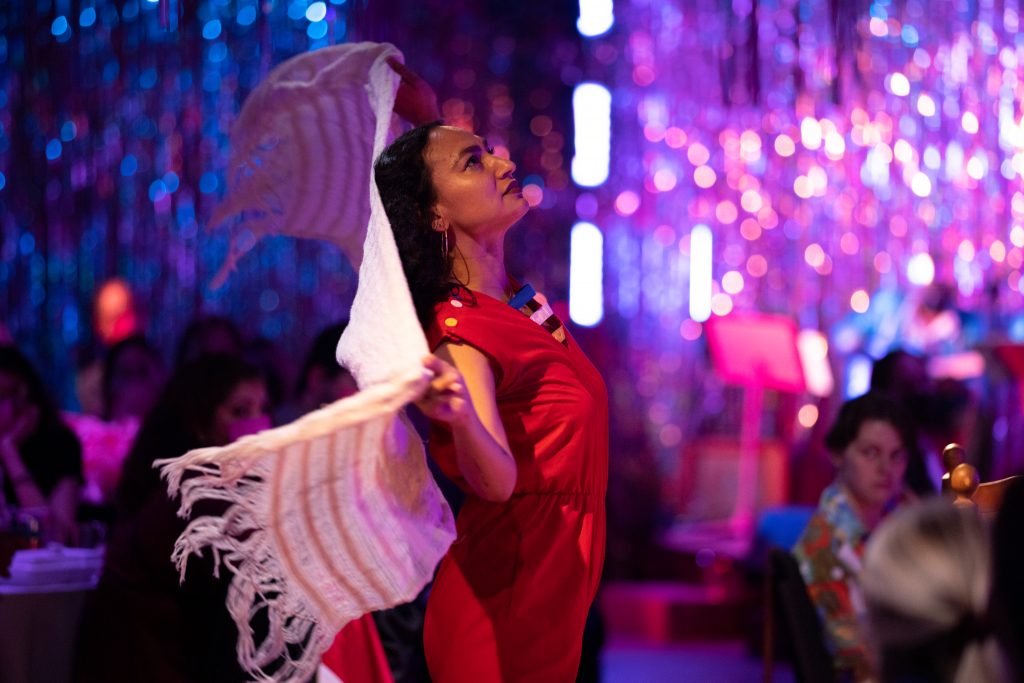
As Maria, Brenda Flores manages to not fall prey to traps of stereotypes that could be painful pitfalls of such a role. Instead, she elevates the character and makes her sympathetic, despite her tough exterior and no-nonsense approach. Like many moms, her rigidness is a product of being fearful and, therefore, overprotective. But we are offered a few pivotal private moments where her soul and sensuality are revealed. The most brilliant is when she is alone folding laundry, and as the music swells (provided by the live band as a “radio”), she is overcome with feeling and dances with a scarf. Flores’ training as a dancer (she danced with the Ballet Folklorico de Mexico from 2015-2019 and had a residency in the Palace of Fine Arts in Mexico City) brings elegance and softness to the role. Maria’s interactions with the spirit of her mother, Grandma Carmen (Talisa Velazquez), who resides in their garden, shed further light on the complexities of multi-generational culture clashes and relationship dynamics between immigrants and their American-born children.
Jose Perez’s portrayal of agoraphobic uncle Solomon is the most heartbreaking. As the lovable family “screw up,” Perez drips with sincerity and tenderness; the character is immediately likable, which makes his struggles all the more unsettling. Like Solomon, Perez has a story and experience with small spaces and isolation. A performer, poet and youth worker, Perez is also an actor/alumni and consultant for Rehabilitation Through the Arts (RTA). This organization helps people in prison develop critical life skills through the arts, modeling an approach to the justice system based on human dignity rather than punishment. Like Perez, Solomon transforms as he is liberated from his burdens, symbolized by the spirit animals crowning him with an eagle’s head, giving him the courage to take flight from the confinements of his home and fears.
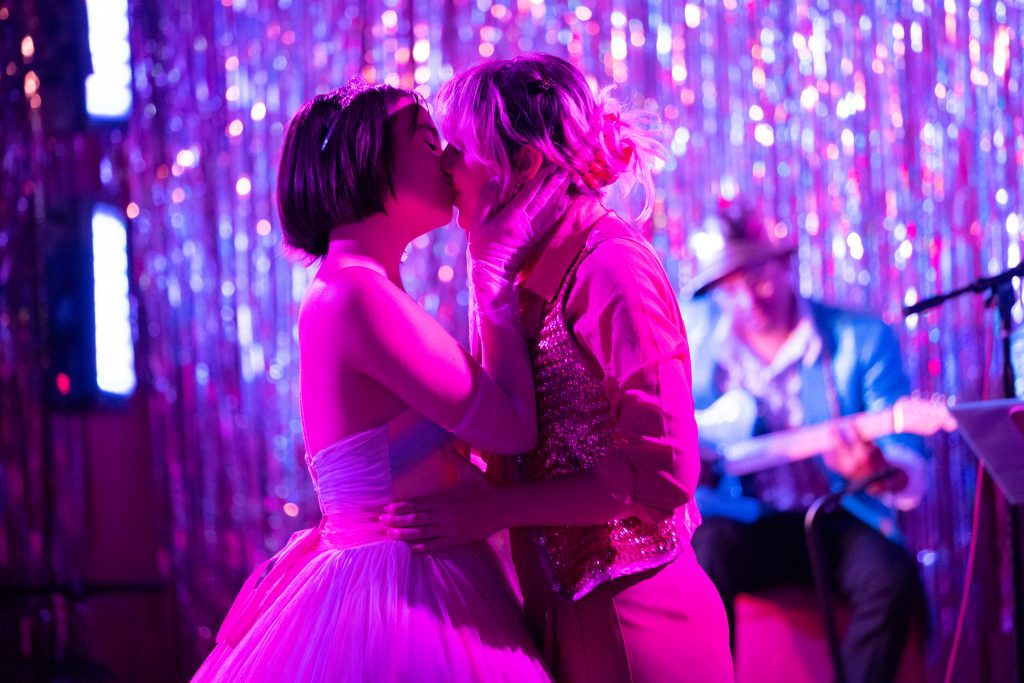
Like most modern fairy tales, this Cindy-rella story rewards those who’ve taken the journey with a happy ending. At the finale Quinceañera party, mother and daughter reconcile their differences, Cindy and Katie share a dance and a kiss, the band plays, and Selena (a cameo appearance by director Tsivicos) performs. Mescal and tequila shots are passed around, and Quiroz-Vasquez, as Father Joaquin, offers a toast. “I’d like everyone to raise their glass and remember that faith and family are shelters, and we must invite as many people into those shelters as possible, for it is there that we will find communion. Salud!”
Indeed, faith and family are shelters, but so are the church of live theatre and the transformative beauty of shared experiences. With proper care, nurturing, and time to develop, QUINCE has grown and blossomed into an extraordinarily moving and masterfully modern work of immersive theatre.
QUINCE’s extended run at The Bushwick Starr ends Sunday, June 26th. The Bushwick Starr’s new venue is located at 419 ELDERT STREET (one block from the Halsey Street stop on the L Train and close to the Myrtle-Wyckoff M Train). For showtimes, tickets, and more information, please visit www.thebushwickstarr.org. For more information about One Whale’s Tale, visit www.onewhalestale.com. After the Bushwick Starr run, QUINCE en la Plaza comes to Lincoln Center’s Hearst Plaza as part of their Summer for the City series on Sunday, July 17. For more details and information, visit www.lincolncenter.org.
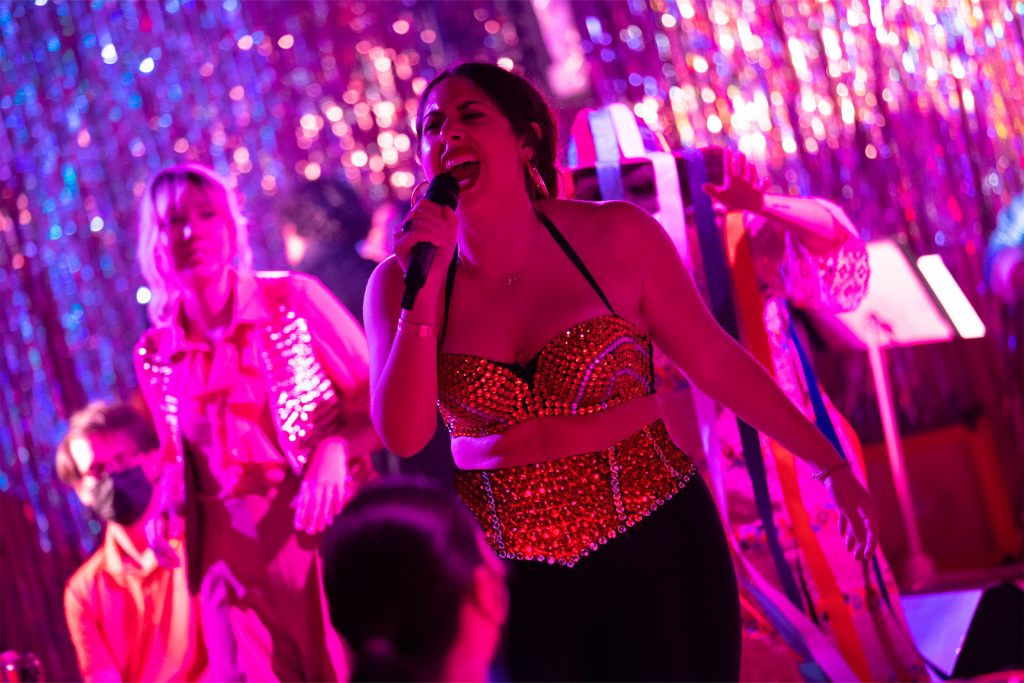
 Thursday, January 1, 2026
Thursday, January 1, 2026
Excellent Review! Can’t wait to see it!! Bravo Quince cast!!